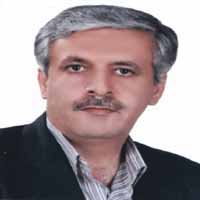The Influence of Bean Rhizosphere on Some Chemical and Biological Properties in Soils Amended with Municipal Sewage Sludge
The biological and chemical conditions of the rhizosphere are known to considerably differ from those of the bulk soil, as a consequence of a range of processes that are induced either directly by the activity of plant roots or by the activity of rhizosphere microflora (16). Municipal sewage sludge (MSS) applied to agricultural soils is a well known reusable source of phosphorus (P), nitrogen (N) and other macro- and micro-nutrients (33). Sludge provides a short-term input of plant-available nutrients and stimulation of microbial activity, and it contributes to long term maintenance of nutrient and organic matter pools (33). Availability of P following application of MSS can be influenced by microbial and chemical properties of the soil, MSS composition, and rhizosphere processes. The specific interrelationships between these components have proven to be complex and, despite continued study, a thorough understanding of the interactions among plant roots, manure P, and P solubility has yet to be achieved (42). Little quantitative information is available about the chemical and biological properties in the rhizosphere of bean plant growing in soils un-amended and amended with MSS. Therefore, the objectives of this research were to evaluate the rhizospheric effects of bean on chemical and biological properties in 10 calcareous soils as amended with municipal sewage sludge (MSS) or unamended (control) under rhizobox conditions.
The selected soils were alkaline (pH=7.9-8.1) and non-saline (EC=0.26-0.61 dS m1). Clay content ranged from 13 to 55 %. The CEC ranged from 10.3 to 33.3 cmolc kg-1. Organic carbon contents ranged from 3.1 to 13.9 g kg-1. The equivalent CaCO3 ranged from 162 to 475 g kg-1. Olsen P ranged from 15.9 to 71.9 mg kg-1 (Table 1). The used MSS were alkaline (pH=7.5) and saline (EC=2.25 dS m-1). Also, the MSS had 15.4 g N kg-1 and 18.5 g P kg-1. The amount of total Zn, Cu, Cd and Pb in this organic source were 1370, 77, 0.91 and 267 mg kg-1, respectively. The results of comparison of dissolved organic C, phosphatase enzymes, microbial biomass carbon and microbial biomass P between the rhizosphere soils and the bulk soils illustrated that the mentioned properties in the rhizosphere soils in comparison to the bulk soils were increased significantly (Tables 2 and 3), with and without MSS application. The microbial biomass is a key factor in soil nutrient cycling and in plant nutrition. The overall effect of plant-microbe interaction is an increase in microbial biomass in the rhizosphere, owing to the high supply of organic carbon by roots and soils (Table 2). Dissolved organic C increase in the rhizosphere could be due to both plant root exudates and microbial populations. It is well known that the root exudates serve as carbon source to heterotrophic microbial populations. The accumulation of dissolved organic C and microbial biomass C in the rhizosphere compared to bulk soil reported in the other studies (44). The contents of CaCl2-P in the rhizosphere were lower than those in the bulk soils due to the P uptake by plant and microorganisms (Table 2). The main effects of sewage sludge and environment over CaCl2P, dissolved organic C, phosphatase enzymes, microbial biomass carbon and microbial biomass P were significant, while the interaction effects of environment × sewage sludge only over microbial biomass P and organic P were significant (Table 5 and 6).The values of dissolved organic carbon, microbial biomass carbon, and available P significantly increased with the application of MSS, both in the rhizosphere and the bulk soils, while phosphatase enzymes significantly decreased (Tables 6).
The results showed that phosphatase enzymes, dissolved organic carbon, microbial biomass carbon and microbial biomass P strongly increased in the rhizosphere soil compared with the bulk soil, with and without MSS. Also, the amount of P extracted with CaCl2 in the rhizosphere was lower compared to the bulk soils. The values of dissolved organic carbon, microbial biomass P, microbial biomass carbon, and available P significantly increased with the application of MSS, both in the rhizosphere and the bulk soils, while phosphatase enzymes significantly decreased.
- حق عضویت دریافتی صرف حمایت از نشریات عضو و نگهداری، تکمیل و توسعه مگیران میشود.
- پرداخت حق اشتراک و دانلود مقالات اجازه بازنشر آن در سایر رسانههای چاپی و دیجیتال را به کاربر نمیدهد.



